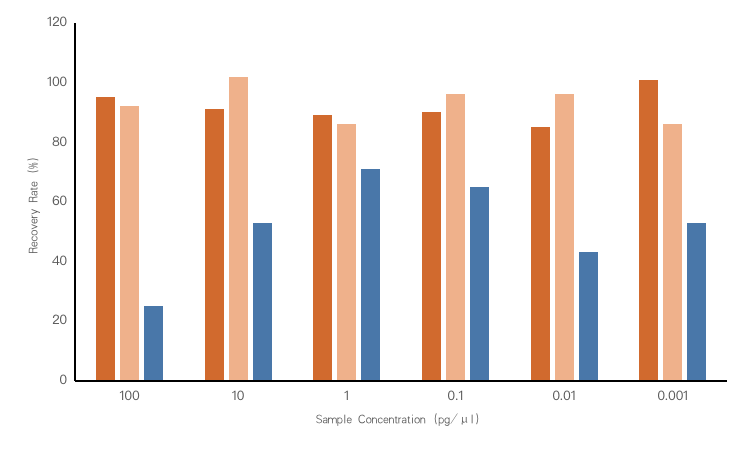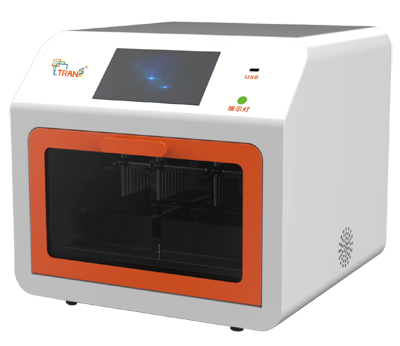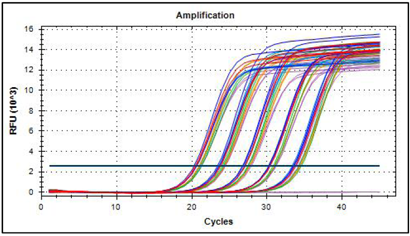Residual DNA Detection and Extraction
Nowadays, various biological products have been widely used in the prevention and treatment of diseases. Especially since the outbreak of the COVID-19 epidemic, more efforts have been made in the screening of therapeutic drugs and vaccine research and development. Although the biologics produced with passaged cell lines have undergone strict purification processes, DNA fragments from host cells may still remain in the products, and these residual DNA fragments will not only reduce the efficacy of biological products but also present the risk of infectivity and tumorigenicity. Therefore, from the perspective of the efficacy and safety of biological products, the residual DNA is the top priority of various quality control standards.
Drug regulatory agencies in various countries have strict limits on the content of residual DNA, and also provide a variety of classic detection methods. The establishment of appropriate residual DNA detection methods is crucial for monitoring the safety and quality controllability of biological products.
Defining Limits for Residual DNA
Pharmacopoeia | Type | DNA Residue Standard |
Chinese Pharmacopoeia 2020 Edition | Cell-based biologics | ≤100 pg/ dosedose |
Vaccines produced from bacterial or fungal | ≤10 ng/dosedose |
U.S. Food and Drug Administration | Endproduct | ≤10 ng/ dose |
Biologics Host Cells | ≤100 pg/ dose |
European Pharmacopoeia | Biologics Host Cells | ≤10 ng/ dose |
Inactivated Hepatitis A Vaccine | ≤100 pg/ dose |
Hepatitis B Vaccine | ≤10 pg/ dose |
Quantitative Detection Methods of Host Cell Residual DNA
Chinese Pharmacopoeia 2020 Edition | U.S. Food and Drug Administration | European Pharmacopoeia |
DNA Hybridization Probe | DNA Hybridization Probe | qRT-PCR |
Fluorescent Staining | Threshold Assay | Immunoenzyme Assay |
qPCR | qRT-PCR |
|
Among them, qPCR has become the preferred detection method for biological product process research and product quality control due to its high sensitivity, specificity, accuracy and reliability.
To solve the safety problem of biological products caused by the residual DNA of the host, TransGen has developed 2 extraction kits for the residual DNA from the host cells and 3 qPCR detection kits for the residual DNA from the host cells (Vero, CHO, E.coli) independently, which can quickly and efficiently extract and detect the residual amount of host cell DNA in biological products.
Host Cell Residual DNA Extraction
1. MagicPure® Host Cell Residual DNA Kit (EH201)
2. MagicPure® 32 Host Cell Residual DNA Kit (EH201-32)
Features
· Suitable for extracting trace DNA fragments of host cells (CHO, Vero, NSO, MDCK, etc.) from ≤200 μl biological product samples;
· High recovery rate of residual DNA;
· Simple operation, no need for centrifugation, fast extraction;
· High extraction yield and high purity;
· Compatible with high-throughput magnetic-rod nucleic acid extractors, among which EH201-32 is used with a 32-channel automatic nucleic acid extractor.
Experimental Data
Using Vero fragmented DNA samples with concentrations of 100-0.001 pg/μl (10-fold gradient dilution) as templates, TransGen and Company S products were used to extract, recover and test the residual DNA of host cells. The results showed that TransGen products have higher DNA recovery rates.

3. TS-32 Automated Nucleic Acid Extractor
· Fast process completed in 30 minutes.
· User-friendliness.
· Ready-to-use prefilled reagent kits are available.
· Temperature controlled.
· Contamination controlled.
· Intelligent instrument.

Residual DNA Detection
1.PerfectStart® Vero DNA Quantification Kit (DH111)
2.PerfectStart® CHO DNA Quantification Kit (DH121)
3.PerfectStart® E.coli DNA Quantification Kit (DH131)
Features
· High specificity, high sensitivity, and high amplification efficiency enabled by 3 kinds of blocking antibodies, suitable for a wide range of samples.
·Specially optimized qPCR reaction buffer to provide higher extension speed, sensitivity and specificity.
· The use of UDG enzyme and dUTP can effectively prevent cross-contamination of PCR products to ensure accurate data.
· High specificity: no cross-reaction between different cell lines;
· High accuracy: the deviation of DNA standard detection value is less than 5%;
· High reliability: DNA fragmentation will not affect the test results, and the recovery rate of fragmented DNA is high; it can be adapted to a variety of qPCR instruments;
· High stability: After repeated freezing and thawing for 7 times or 8 days at 4°C, room temperature and 37°C, the product performance will not be affected.
Experimental Data
Wide linear range
Using serially diluted host cell DNA standards as templates, TransGen products were used for quantitative detection of host cell residual DNA. The results showed that TransGen products have a wide linear range.
The linear range of DH111-Vero is: 3 fg/μl-300 pg/μl, R2=1.000, the amplification efficiency is 102.3%, and the CV of detection valuesat each concentration is <15%.

The linear range of DH121-CHO is: 3 fg/μl-300 pg/μl, R2=1.000, the amplification efficiency is 97.6%, and the CV of detection valuesat each concentration is <15%.

The linear range of DH131-E.coli is: 50 fg/μl-500 pg/μl, R2=0.999, the amplification efficiency is 98.4%, and the CV of detection valuesat each concentration is <15%.

High Specificity
Interference tests with detection reagents for Vero, CHO, E.coli were carried out with genomic DNA of engineered cells commonly used in the production of biological products. The results showed that the interference group coincided with the control group, and there was no interference.
DH111-Vero

DH121-CHO

DH131-E.coli

High Reliability
Fragmented DNA (Vero, CHO) after sonication was diluted according to the concentration gradient of 300 pg/μl, 30 pg/μl, 3 pg/μl and 300 fg/μl, and detected. The results showed that DNA fragmentation did not affect the test results.
DH111-Vero DH121-CHO

The sonicated fragmented DNA (E.coli) was serially diluted at concentrations of 500 pg/μl, 50 pg/μl, 5 pg/μl, 500 fg/μl and 50 fg/μl, and detected. The results showed that DNA fragmentation did not affect the test results.
DH131-E.coli

Related Products
















